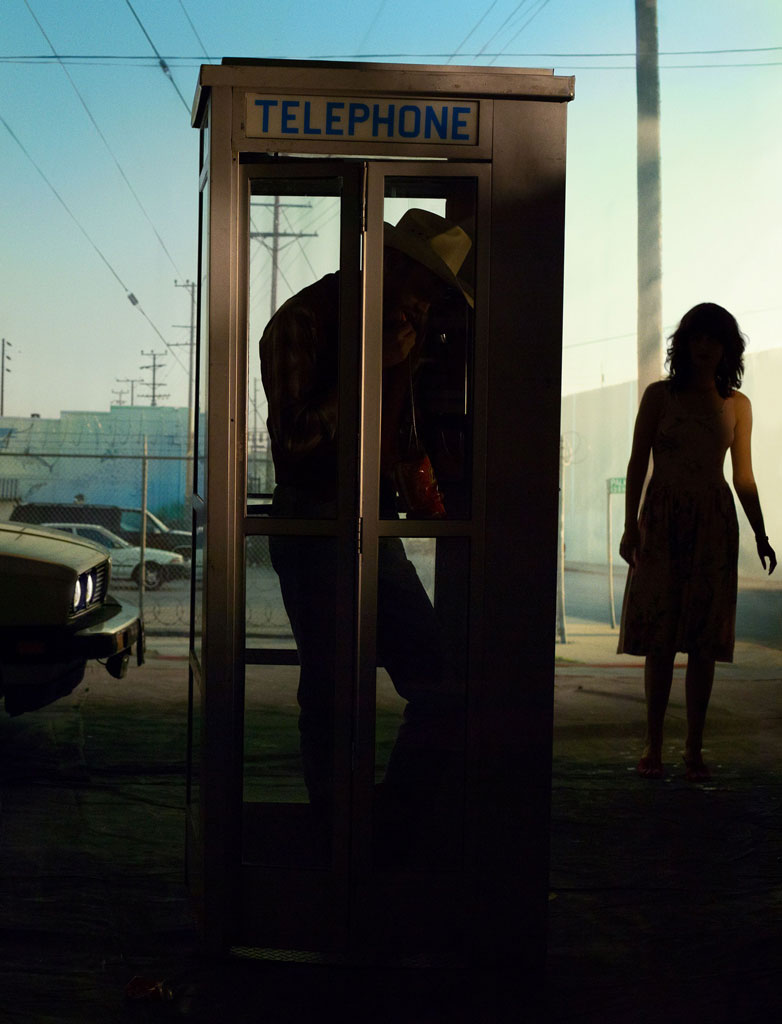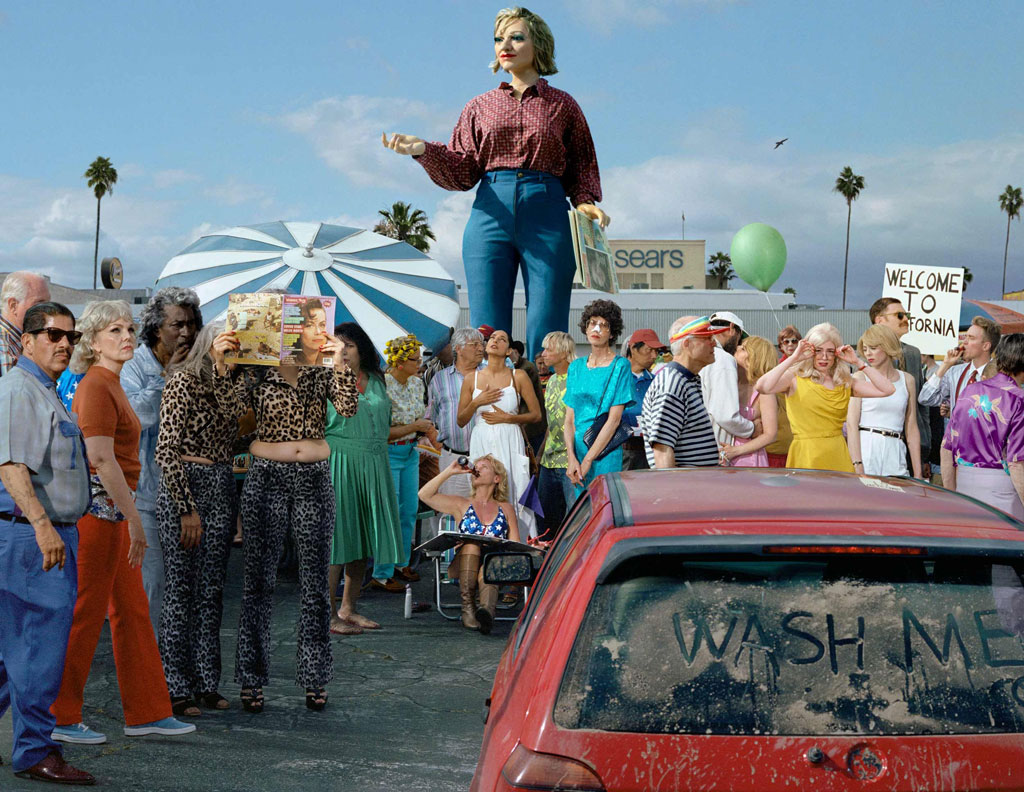ART-PRESENTATION: Alex Prager-Play the Wind
 Alex Prager is an American photographer and filmmaker known for her cinematic color photography featuring a hyper-real, Old Hollywood aesthetic. Her work often uses trained actors in staged settings, acting out ambiguous melodramatic narratives in colorful costumes. Over time, Prager has expanded her practice into film: in 2011, she directed “Touch of Evil” a video series featuring some of the year’s best cinematic villains for The New York Times Magazine, for which she won an Emmy Award in 2012.
Alex Prager is an American photographer and filmmaker known for her cinematic color photography featuring a hyper-real, Old Hollywood aesthetic. Her work often uses trained actors in staged settings, acting out ambiguous melodramatic narratives in colorful costumes. Over time, Prager has expanded her practice into film: in 2011, she directed “Touch of Evil” a video series featuring some of the year’s best cinematic villains for The New York Times Magazine, for which she won an Emmy Award in 2012.
By Efi Michalarou
Photo: Lehmann Maupin Gallery Archive

Alex Prager in her solo exhibition “Play the Wind” presents new works, including the world premiere of her new film, “Play the Wind” (2019). Well established for her genre-defying approach to image making that timelessly combines eras, cultural references, and personal experiences, the photographs and the film debuted in this exhibition are a fresh reflection on Prager’s place of origin, site of inspiration, and frequent character, the city of Los Angeles. Prager’s contemporary take on the modernist tradition of anthropomorphizing a city, from Henri de Toulouse-Lautrec’s Paris, to James Joyce’s Dublin, to Keith Haring’s New York City, arises from the artist’s recent professional and personal transformation. Having passed a major career milestonethe publishing of her first monograph, “Silver Lake Drive” (2018, Chronicle Books), and a mid-career retrospective of the same title, Prager spent time reflecting on her beginnings as a photographer and her transition to film directing. In addition, the birth of her first child in the city where she too was born and has lived most of her life contributed to an uncanny nostalgia for the artist that psychologically pulled her into the past while simultaneously beckoning her toward the future. Creating a film that could contain these seemingly contradictory impulses became the impetus for this new body of work. In Prager’s newest film, “Play the Wind” we are led on a journey throughout Los Angeles with our protagonists Dimitri Chamblas and Riley Keough. Depicted from the vantage point of driving in the city, Prager cultivates a surreal sentiment of passing moments that feel like a fabricated memory or a dream. She utilizes this sensation of motion throughout the film as a narrative device, with her command of film directing, honed over eight films including the Emmy Award winning “Touch of Evil” (2011), now contributing a new sense of movement also evident in the accompanying still photographs. She anchors her characteristically elaborate fictional scenes within the real Los Angeles, shooting for the first time in many years primarily on location rather than in the studio—a decision that harkens back to when Prager began her career over a decade ago. Though the images contain large constructed set pieces and are populated with carefully cast extras (numbering up to 300), the presence of the Los Angeles streets infuses an element of urban lifeblood that is palpable in the work. Prager’s perception of Los Angeles is one of the artifice and drama befitting Hollywood, with real world chaos that overflows into sci-fi dystopia and post-apocalyptic dread. She toys with these visions of the city disseminated on film, TV, and within the popular imagination, which inform our characterization of a place as much as our own memories. Technically important to the making of this film was Prager’s collaboration with a team to produce set designs and props that would add a layer of artifice and duplicity to her real-world locations. The interference of these traditional illusionary effects upon the actual Los Angeles streets and locations Prager shot on creates an unnerving sensation, hinting at the reality that might exist just outside of our perception. All of these elements are recast in the series of photographs, which appear in different configurations or on various scales that further destabilize any linear narrative. Drawing on the concept of a distorted memory, Prager has found ways to incorporate objects seen in the photographs and film into the gallery as sculpture, with the intent to further dislodge our understanding of place and time and bring us deeper into her highly constructed world. The photographs in the series are complementary to the film, meant to give the spectator a chance to linger on the details and the stories contained in each frame. She seeded the images with gestures to her former self. A woman lies on a bedspread that Prager used in an early photograph. Friends, family members, and actors whom she has portrayed for years reappear, the passage of time evident in their faces and bodiesHer crowd scenes have evolved, too, into manic tableaux of movement and satire. The agitation is contemporary, sometimes reflecting what she describes as a feeling of knowing something has gone wrong without being certain of the cause.
Info: Lehmann Maupin Gallery, 536 West 22nd Street, New York, Duration: 5/9-26/10/19, Days & Hours: Tue-Sat 10:00-18:00, www.lehmannmaupin.com

